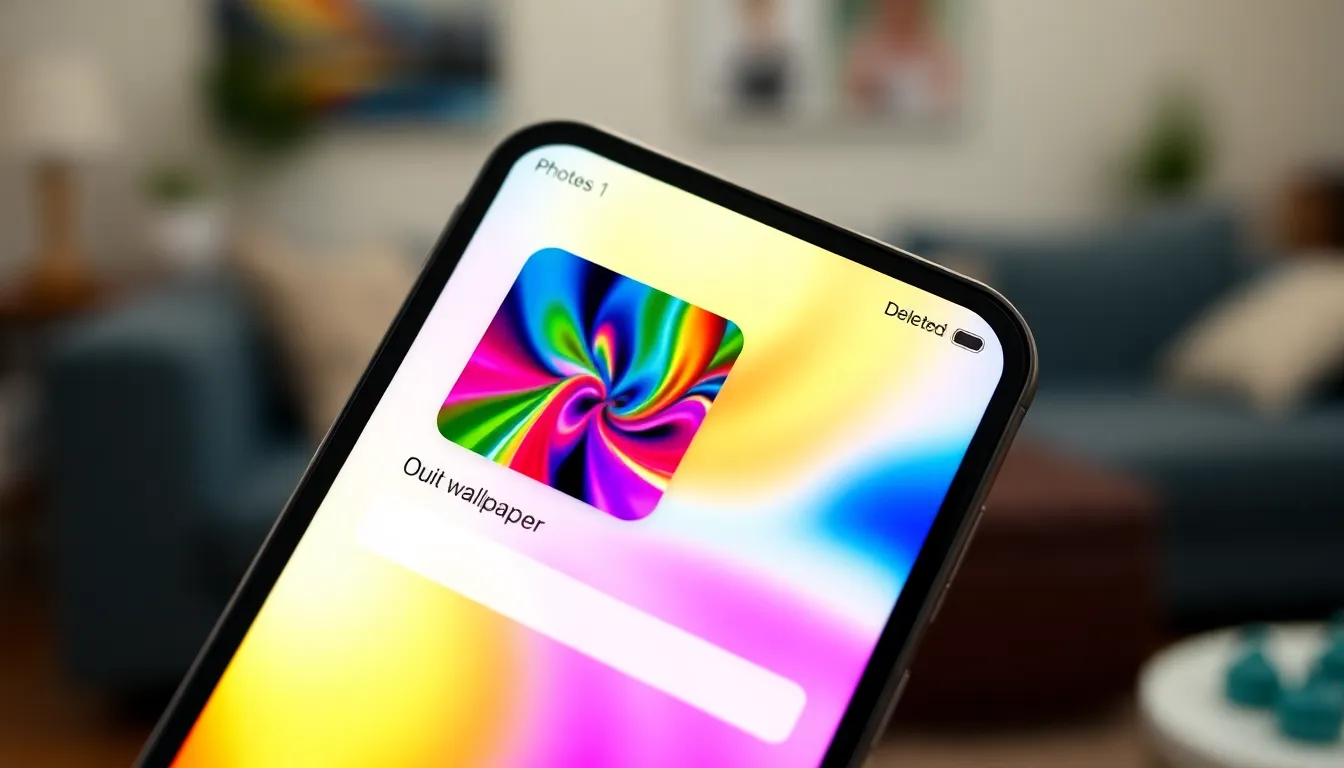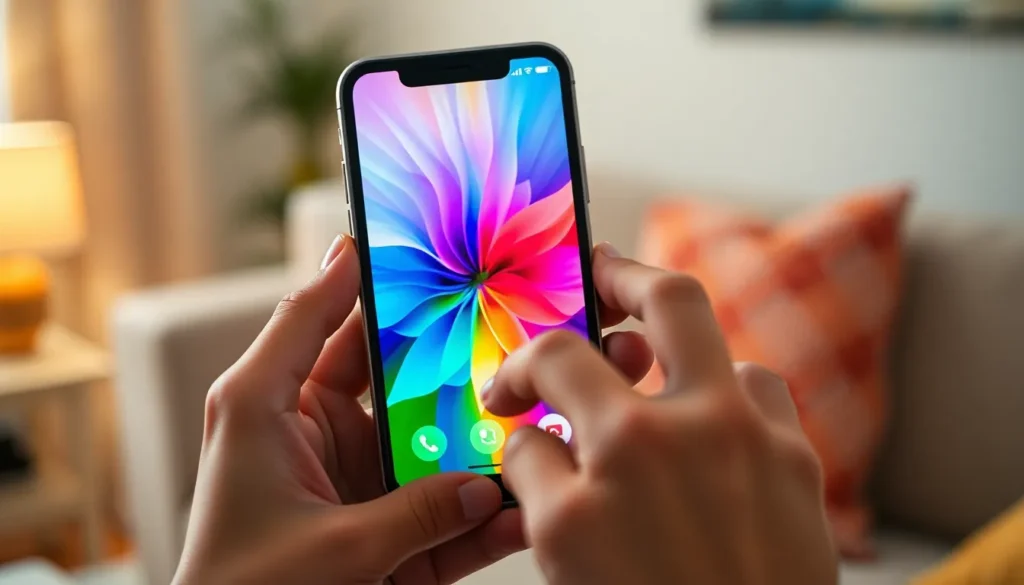Table of Contents
ToggleEver looked at your iPhone wallpaper and thought, “What was I thinking?” It happens to the best of us. That once-stylish sunset or adorable cat meme can quickly turn into a digital eyesore. Fortunately, deleting that wallpaper is easier than finding a good Wi-Fi signal.
Understanding iPhone Wallpapers
Changing the wallpaper on an iPhone enhances the user experience. Multiple types of wallpapers cater to different preferences and styles.
Types of Wallpapers on iPhone
iPhones offer various wallpaper types, including static images, dynamic wallpapers, and live photos. Static images consist of still pictures chosen from the photo library. Dynamic wallpapers feature animated backgrounds that change based on user interaction. Live photos combine short video clips with still images, allowing movement when pressed. Each type serves different aesthetic needs and transforms the look of the home and lock screens.
Importance of Personalizing Your Wallpaper
Personalizing wallpaper reflects user identity and preferences. A unique background establishes a sense of ownership over the device. Choosing a favorite image or theme can boost mood and enhance satisfaction while using the phone. Custom wallpapers also help users easily identify their devices among many. Tailoring wallpaper to personal interests can create an emotional connection, making technology feel more personal.
Steps to Delete a Wallpaper on iPhone

Deleting an unwanted wallpaper on an iPhone is straightforward. Users can choose to remove wallpapers from the Photos app or the Wallpaper settings.
Deleting from the Photos App
Open the Photos app to start the deletion process. Find the wallpaper image that needs removal. Tap on the image to view it in full screen. Select the trash can icon to delete the photo. Confirm the deletion when prompted. Once deleted, that particular image will no longer appear in the gallery or as a wallpaper option.
Removing from Wallpaper Settings
Navigate to the Settings app for an alternative method. Locate the Wallpaper section within the settings. Choose the option for choosing a new wallpaper. Once in the selection menu, select a different wallpaper or one of the defaults. Confirm the new selection. This action will effectively replace the existing wallpaper without requiring deletion of the original image.
Common Issues and Troubleshooting
Problems may arise when attempting to delete wallpapers on an iPhone. Users sometimes encounter glitches that prevent them from successfully removing a wallpaper. This may happen if the wallpaper option remains unresponsive, or if the device requires a software update. Restarting the iPhone often resolves these issues. Checking for any software updates can also help in fixing glitches.
Wallpaper Not Deleting
Users occasionally face difficulties when trying to delete a wallpaper via the Photos app. If an image fails to delete, ensuring the selected photo is not set as the current wallpaper is essential. In some cases, using the “Delete” option in the Photos app doesn’t produce the expected results. If this scenario occurs, users should navigate to the Wallpaper settings and select a different option to replace the existing wallpaper instead. This method often circumvents deletion issues, providing a fresh look without removing original images.
Alternative Ways to Customize
Various options exist for personalizing an iPhone beyond simply changing wallpapers. Users can explore applying dynamic wallpapers or live photos, creating an interactive experience. Accessing the Wallpapers section in the Settings app allows users to preview multiple wallpaper styles. Engaging in third-party apps can also offer unique designs not usually found in the built-in options. Incorporating favorite images or scenic landscapes as wallpapers often enhances visual appeal. Changing wallpapers periodically keeps the device feeling fresh and tailored to individual preferences.
Deleting a wallpaper on an iPhone is a straightforward process that offers users the freedom to refresh their device’s look. Whether it’s a static image or a dynamic wallpaper, users can easily manage their preferences through the Photos app or Wallpaper settings. Embracing the ability to change wallpapers not only enhances aesthetic appeal but also strengthens the personal connection to the device. Regularly updating wallpapers can keep the iPhone feeling new and aligned with individual style. With a few simple steps, anyone can transform their screen into a reflection of their personality.







